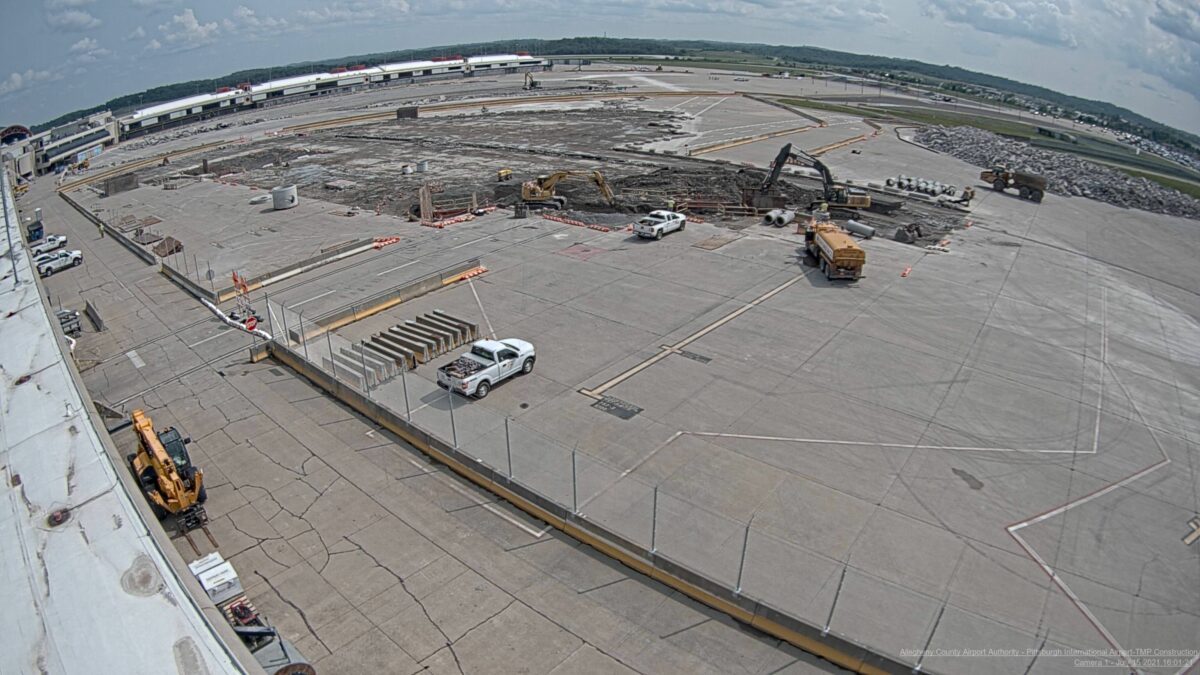
Good Bones Built For and By Pittsburgh
Part of the design vision for Pittsburgh International Airport’s Terminal Modernization Program is the concept of community.
That sense of “for Pittsburgh by Pittsburgh” will be on full display this spring, when the steel skeleton of the new 700,000-square-foot terminal begins to rise, led by a Pittsburgh family-owned contractor, with a local crew of 175 skilled trades workers, using U.S.-produced steel fabricated by a company located less than 10 miles from the airport.
“We’re excited…it’s going to be a good project for the region,” said John Mascaro Jr., CEO of Mascaro Construction Company. “The design is done well, and the quality of craftspeople that we will be utilizing is second to none in this country.”
In June, the Airport Authority awarded Mascaro Construction the TMP’s largest construction contract ($124.3 million for structural steel and concrete decks). The Pittsburgh company, founded in 1988, sports an impressive resume that includes Heinz Field, Dick’s Sporting Goods Headquarters, Pitt Biomedical Science Tower and other major infrastructure improvement projects.
“Mascaro is one of Pittsburgh’s largest and most well-regarded contractors,” said Paul Hoback, PIT’s chief development officer. “This award will provide local jobs and economic benefits to this region. Their work is proven, and their mission, values and safety goals align with the airport’s for this critical project for our region.”
Before starting Mascaro Construction, founder Jack Mascaro worked for Mellon Stuart and was involved in the early construction of PIT’s current airport. His three sons – John, Jeff, and Michael – run Mascaro and carry-on their father’s legacy.
“It’s kind of special for my brothers and myself to build the new terminal when our dad helped build the airport that exists today,” John Mascaro Jr. said. “We’re carrying the torch forward and building this project for the future of the region.”

Mascaro’s contract specifically includes erection of structural steel columns (38 quad or double tree columns that are a unique hallmark of PIT’s design), beams, girders, infill steel, metal decking and more. The concrete portion of the contract – about 10,000 cubic yards – includes all concrete above ground level, elevated concrete slabs, topping slabs and concrete infill.
Mascaro plans to work with subcontractor Sippel Steel in Ambridge, Pa., to procure approximately 16,000 tons of raw steel and then fashion it into the specific forms that will be used to construct the bones of the new terminal.
“They’re a very qualified and professional steel fabricator that we have done a lot of work with over the years,” Mascaro Jr. said. “They will procure the steel from various places in the U.S. and then fabricate it into the specific pieces to be erected on site.”
Per the Pennsylvania Steel Product Procurement Act, at least 75 percent of the steel used in public works projects must come from domestic sources.
Mascaro plans to mobilize contractors on the airport construction site this fall, where early site preparation has been underway since April. Steel erection is scheduled to begin next spring. The new terminal will be built in the middle of the X-shaped Airside Terminal between Concourses C and D, with the steel work expected to be completed in 2023.
Earlier this month, Mascaro was also awarded a $39.1 million contract for foundations and slab-on-grade work. Another local company, Clista Electric, based in Wilkinsburg, Pa., was awarded a $1.6 million contract to install the new terminal’s deep underground utilities. Remaining construction packages will be bid and awarded through the end of this year.
“We wanted to ensure that this project was divided into multiple construction packages to allow for local participation of firms of all sizes,” Hoback said. “This is our design vision and strategy in action to make sure this terminal is built for Pittsburgh and by Pittsburgh.”
John Mascaro Jr. said it’s an honor to continue the legacy of airport construction began by his father and to build the future of travel in Pittsburgh.
“To be part of an iconic project like this that turns the next page on sustainability and the utilization of new technology with such a creative and innovative design…well, I’m excited not only to build it, but to travel through it as well.”
The new terminal is set to open in early 2025.
Recent Comments